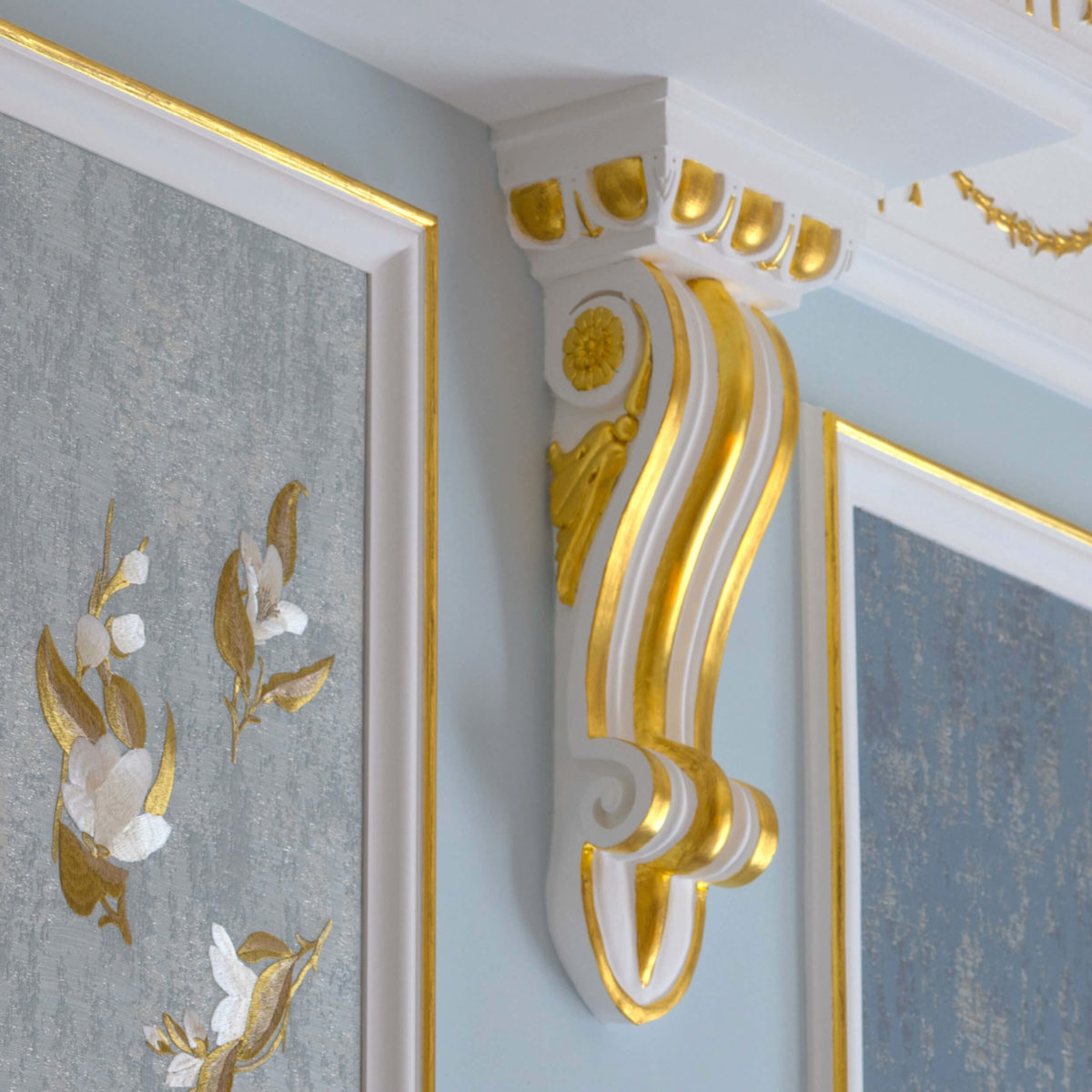Skirting is found on the floor around the perimeter of a room. The opposite to this is a cornice, which follows the perimeter of a room, attached to both the wall and ceiling. This can be plain or heavily enriched and decorative.
Cornice FAQs
-
What is ceiling skirting called?
-
What is the difference between cornice and coving?
It is important to note that ‘coving’ is the name given to a specific type of cornice with a round ‘cove’ like feature in the middle. An example of this is our CN10 moulding. They are typically quite proportionate in size, therefore the projection and depth are usually quite similar. Coving is typically also very plain and doesn’t usually have any ornate features on them, although there are some about.
-
What is the purpose of cornice?
The purpose of interior cornices was to hide any unwanted cracks between the ceiling and wall line. It also added a decorative element to the room and character. The purpose of the exterior cornice was, and is, to protect the building’s exterior from rainwater (primarily acid raid) and avoid erosion. It typically done this with the type of profile used. Many Georgian cornices have a ‘drip’ feature which is heavily associated with this, which dipped down and then returned back up. The rainwater couldn’t fight against gravity and therefore fell at this drip feature, away from the building. See CN12 for an example of this.
-
Is the cornice part of the ceiling?
No, it is a separate and voluntary piece by the client to add a cornice to their room in order to create more character. But it is attached onto the ceiling and wall line.
-
Can the cornice I have chosen be made as a light trough?
Most likely, yes. Please consult us first. We can manoeuvre the wooden fixings around in the cornice cast in order to cater for this, working with architect or builders drawings. Also, we strike down the back of the top members making sure they are very flat and consistent, therefore there will be no discrepancy on the shadow cast from the back of the moulding when you come to turn the lights on. This is the beauty of having all our mouldings traditionally hand made in our workshop in Essex.
-
What is a cornice?
A cornice is a decorative moulding that follows the perimeter of the room, jointed to both the ceiling line and wall line.
-
What are the types of cornice?
The types of cornice can be categorised into certain different sectors. Materials it is made from, the characteristics/style of the cornice (plain / decorative) or the era it is from (Georgian, Victorian etc).
Materials: Plaster, Gyproc (plaster covered in paper), Polyurethane (Foam), Glass Reinforced Concrete (sand, cement, water mixed with glass strands) and timber.
Characteristics: If you want to get very technical all individual curves and steps on a cornice have names. A ‘S’ shape curve is commonly called a cyma recta and a quarter of a cirle protruding out of the cornice is called an ‘ovolo’. However, customers tend to tell us they want either a plain or decorative cornice. We would consider a decorative cornice to have enrichments such and flowers and traditional motifs on them where as a plain cornice would be considered a profile with no decorative elements added.
Era: Georgian, Victorian, Edwardian, Regency, Art Deco, to name a few.



